10 questions for… creature creator Carlos Huante
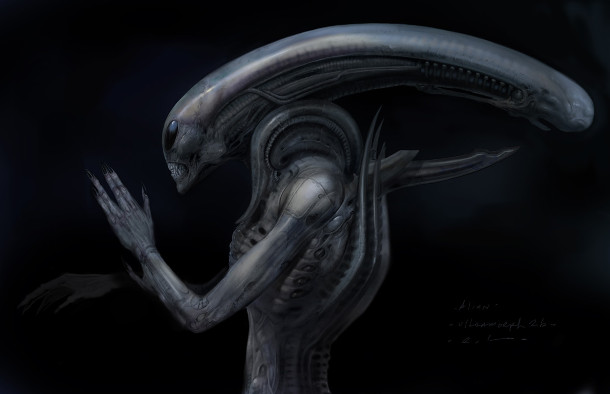
In the run-up to his session at this month’s Gnomon Workshop Live, the leading creature designer faces our barrage of quickfire questions about his career, his design philosophy, and his advice for young artists.
 Carlos Huante is one of the world’s leading creature and character designers, with a resume that stretches from the original Men in Black to recent blockbusters like Prometheus. Born in East LA, he attended night classes in life drawing at Art Center College of Design in Pasadena. He first worked in the animation world at Filmation, and later as a character designer on the Ghostbusters animated series, switching to movie work in the mid-1990s.
Carlos Huante is one of the world’s leading creature and character designers, with a resume that stretches from the original Men in Black to recent blockbusters like Prometheus. Born in East LA, he attended night classes in life drawing at Art Center College of Design in Pasadena. He first worked in the animation world at Filmation, and later as a character designer on the Ghostbusters animated series, switching to movie work in the mid-1990s.
Since then, he has worked for industry legends Rick Baker, Rob Bottin, Steven Spielberg, Guillermo Del Toro and the Chiodo Bros on such films as Men in Black I and II, Mighty Joe Young, Hellboy, War of the Worlds, The Spiderwick Chronicles and Alice in Wonderland.
From 27-28 September 2014, Carlos will be one of ten artists conducting demos at Gnomon Workshop Live, which takes place at the Gnomon School of Visual Effects’ Hollywood HQ. The event offers an exclusive opportunity to meet today’s leading designers and concept artists and see their workflows at first hand.
We caught up with Carlos to find out about his demo, the perspective he has gained on CG from a career in ‘tra-digital’ art, about not compromising with money men – and where the sculpting muscle is located…
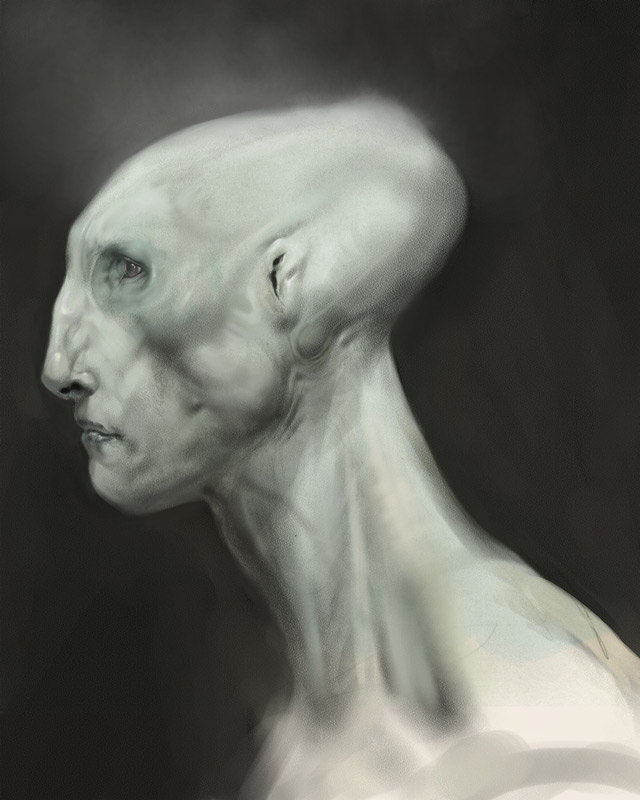
An image of the Engineer from Ridley Scott’s Prometheus. In his session at this year’s Gnomon Workshop Live, Carlos will be showing his work from a range of movie projects, and discussing his design process.
CG Channel: What will you be covering at Gnomon Workshop live?
Carlos Huante: I’ll be showing work from recent and a couple of not-so-recent movies – from a couple of films that weren’t made – and talking about the process that I went through.
CGC: What do you hope that people take away from your session?
CH: They will hopefully have a better understanding of what it takes to design for entertainment, and what it takes to be an artist in a commercial world.
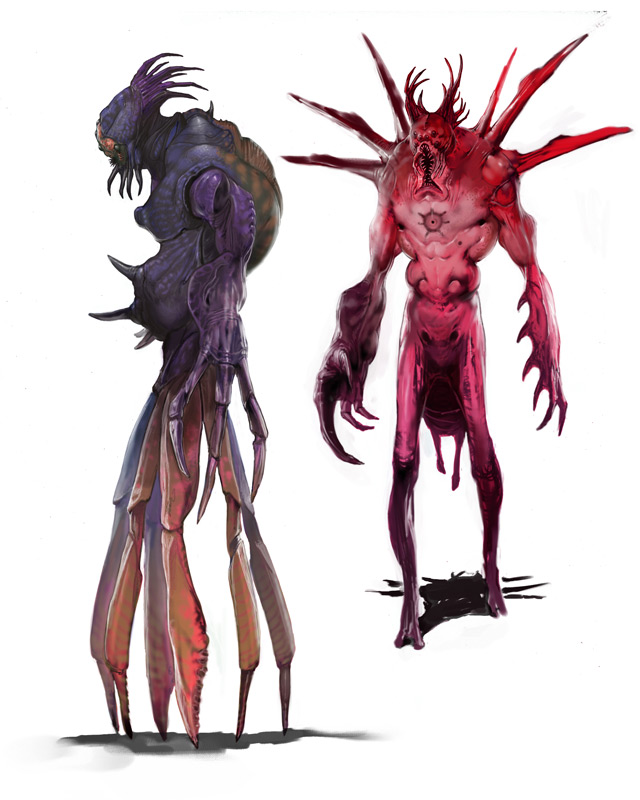
Understand the medium you work in, whether it is digital or analogue, advises Carlos. Insight into the composition of traditional materials like markers and pencils helps you create new effects.
CGC: What’s the most indispensable tool in your primary software package?
CH: In Painter 6.1, there are three that work together beautifully: the Digital Watercolor and Captured Bristle brushes and the Digital Airbrush.
I still use Painter 6.1 in Classic, but that computer is getting old and it bums me out that it may go away. Painter 9.5 is a great substitute, but that doesn’t work with a newer computer either. I wish I could still also use Photoshop 5.5, because together they were perfect: like rice and beans.
That’s why more and more I am reverting to traditional, non-digital media. I’m an artist, and I don’t like a software company telling me what tools I have to use.
CGC: Tell us one neat technical tip that you’ve never seen written down anywhere.
CH: For all the analogue artists out there: study the composition of the medium that you work in. If you are resourceful, it will give you ideas for how to create effects.
For example, I use alcohol [to blend] Prismacolor pencils. I discovered this because while I was working with clay, I happened to realise that the pencils’ waxy composition was much like the clay I was using. I tried [using alcohol] as a solvent and it worked.
There are many people that use [this technique now], but are taking it to different levels. I’m not saying that it’s because of me. But they may have discovered the same thing I did by analysing the medium.
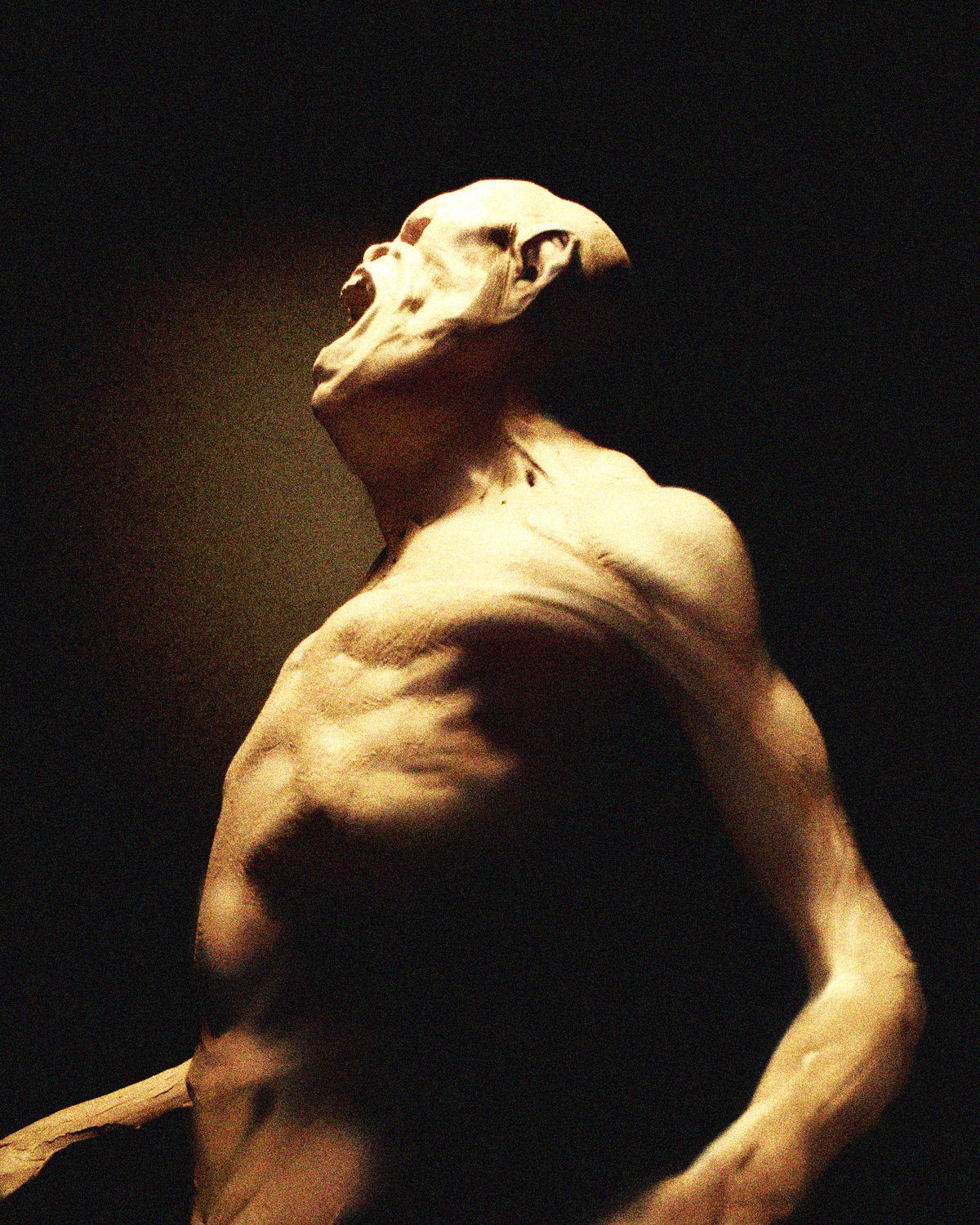
Not a career for the faint-hearted: “If you have the gift [for creature design], it is all that you want to do, no matter the pain, rejection and loneliness that ensues,” says Carlos.
CG Channel: What’s the most common mistake that aspiring creature artists make?
CH: Trying to be creature designers when they don’t have the gift for it. Most feel the need to fill up their resumes and cover gaps in their portfolios, all the time knowing that [they aren’t cut out for it].
CG Channel: What are the three most important qualities a creature artist should have?
Fortitude, endless patience, and true desire. And honesty. I just gave you four. You have to know that this is what you were meant to do. You have to actually have the aptitude before any education touches you. And you have to have the ability to learn fast. If you aren’t honest about those things, it will be a painful road.
As it is, it’s a fight to even be a generalist or to be a ‘go with the flow’ artist, let alone if you are trying be an artist that matters. To be someone who is pushing design to a different place is even harder – way harder – but if you have the gift, it is all that you want to do, no matter the pain, rejection and loneliness that ensues.
CGC: What’s the best question you’ve ever been asked by a young artist?
CH: It was while sculpting one of the arms of the creature for Deep Rising at Rob Bottin’s. I’m facing the sculpture and from my left, a wrist slowly slides in front of me, the palm facing me, and the young guy that was helping out on the sculpture asks, “Hey Carlos, what’s this bump under my wrist? Is that a muscle?”
Rob was sculpting the head, just over to my right. I glanced over at him and he, as he does, just gave me a deadpan look. Both of us were thinking the same thing. It was like he was bragging about having a special muscle. The next day one of the other guys in the shop dubbed it the ‘sculpting muscle’. The young guy didn’t find that too amusing, but it stuck.
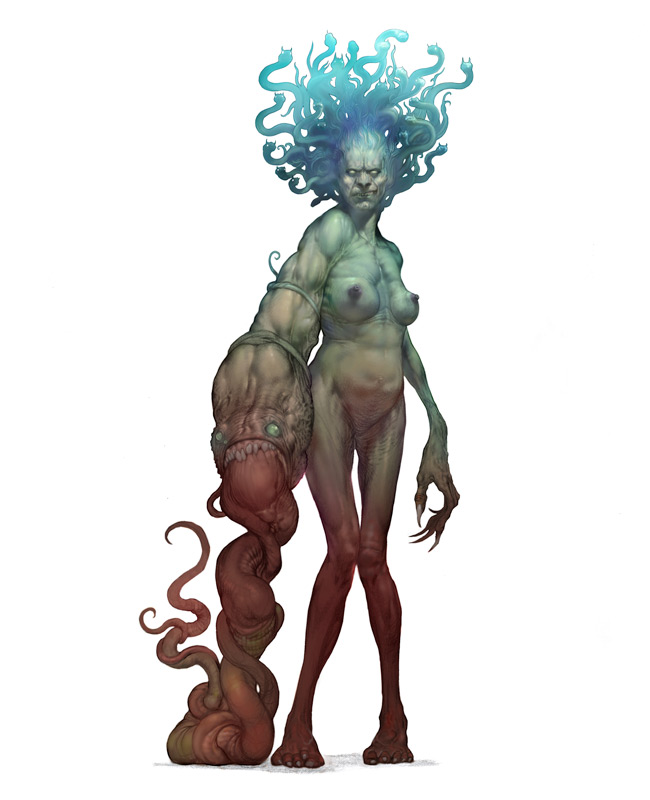
An image from Carlos’s book Mas Creaturas. Iain McCaig described it as “a monstrously beautiful body of work. His forms are taut with agonies and ecstasies; his images bite like chisel and hammer.”
CGC: Tell us something about your own career that no one else knows?
CH: One of my first jobs in the mid-to-late 1980s was making pretty drawings of Alvin and the Chipmunks in the layouts for the animated series. I worked on It’s Punky Brewster as well, correcting layouts.
CGC: What do you wish someone had told you about the CG industry before you began working in it?
CH: That it would exist. The industry became CG after I had already been in it for 13 fun years. Had it been CG when I started, I might not have been as interested.
I work for CG companies, but the deepest I go is what some of the other illustrators and I call ‘tra-digital illustration’. I art direct the modellers and the texture artists, but I don’t do anything CG per se. But even though my inspiration is different, I see glimpses of things that are interesting starting to happen just now.
CGC: What part of your working day most makes you think: ‘This is why I do this job?’
CH: Drawing on paper. Or the last moment of plain old rendering, when thought can be pushed to the side because you’ve already done the hard work and the design makes sense. This is your own personal picnic time. You don’t care what anyone says about it at this point, because you know it’s good.
Now… the clients don’t always agree, which is the acid blood shooting back at you with every kill. You have to know how to dodge those hit-backs by enjoying the process of creation. That joy should not be dependent on the clients’ approval, even though as a good employee that is the goal.
Here’s my bad advice/important safety tip.
You should never ever resign yourself to solely meeting the requirements for the job, and giving the client only what they asked for. They may love you for it, but after years of doing that, sitting in your chair in your nice house because you are now the go-to guy and friend of all the money people, you will notice that you are dirty and you will not be able to shake the dirt off. There will be a hole where your heart and talent used to be.
Don’t go there to begin with. Keep on trying and pushing.
Register for Gnomon Workshop Live ($250 for all 10 sessions, or $150 for students)
Full disclosure: CG Channel is owned by the Gnomon School of Visual Effects.
